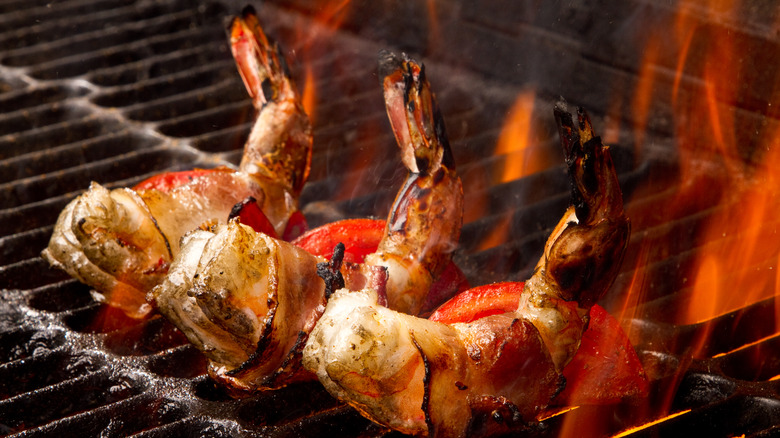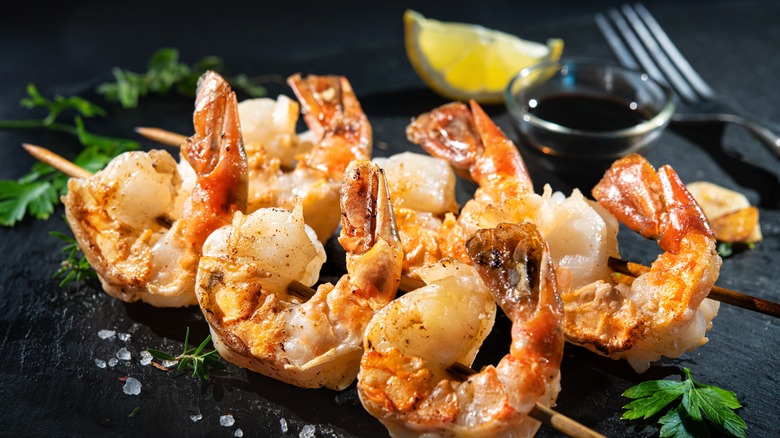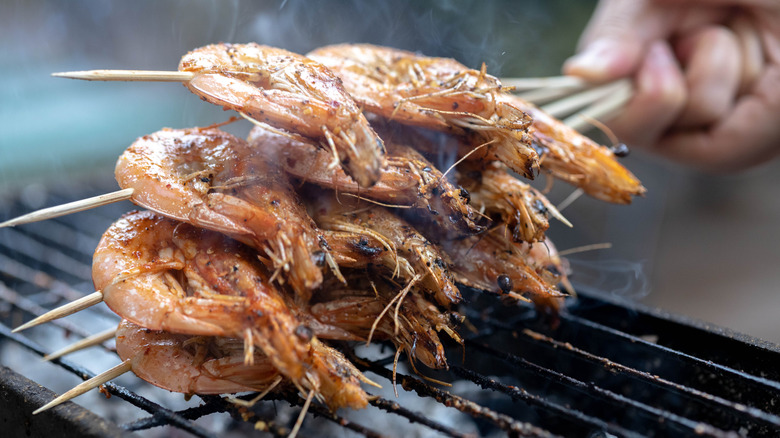Why You Should Seriously Avoid Grilling Peeled Shrimp
Depending on your preferences, you can roast, boil, fry, or grill shrimp to bring out its flavor (eating shrimp raw isn't recommended because it could lead to food poisoning). A better option is to grill it for a couple of minutes and then add it to salads, tacos, gazpacho, or other dishes. For example, this Mediterranean-inspired shrimp and grits recipe can take your lunch or dinner to a whole new level. Moreover, shrimp can replace prawns and crabmeat in most dishes.
Shrimp is sold peeled or with the shell on, and you should choose the latter if you plan to grill it. First of all, shell-on shrimp is easier to handle and less prone to overcooking. The shell acts as a protective barrier, helping to retain moisture and prevent the shrimp from curling up or breaking apart on the grill. Additionally, it's rich in natural juices that can add depth and complexity to the final dish.
The proper way to grill shrimp for maximum flavor
First, wash the shrimp and remove the back vein with a knife or tweezers. After that, marinate them in olive oil, fresh lemon juice, and seasonings for up to one hour. Keep them in the fridge until you're ready to cook. If you're short on time, simply brush it with olive oil on both sides. Add salt, pepper, minced garlic, chives, or other seasonings.
Next, preheat the grill to 400 degrees Fahrenheit and grease the grates with vegetable oil. Lay the shrimp on it or thread them on stainless steel skewers so you can flip them more easily. Better yet, try these delicious shrimp kebabs that take less than five minutes to cook. Remember to leave some space between each shrimp to ensure even cooking. Last, grill the shrimp for up to three minutes per side or until their internal temperature reaches 145 degrees Fahrenheit. Once fully cooked, they should be pink and opaque, with the shells slightly charred.
Shrimp shells should be used for other recipes
In fact, all you need to do to elevate the flavor of shrimp is keep the shells on during cooking. Plus, it's much easier to remove the shell after cooking when the meat has had time to expand and loosen. Shell-on shrimp is also more visually appealing thanks to the char and caramelization from the protein and sugar in the shell reacting to the heat of the grill. Just make sure to remember to devein even if the shell stay on.
Carefully remove them from the grill and serve them with freshly squeezed lemon juice, lemon wedges, or dipping sauces. After grilling, there's no need to discard the shells. Chitin, a substance that accounts for up to 40% of the weight of a shrimp, is safe to eat, according to the U.S. Environmental Protection Agency. If you choose to remove the shells after cooking, crush them with a spatula and use them to make a shrimp stock recipe or sauces for later use.


